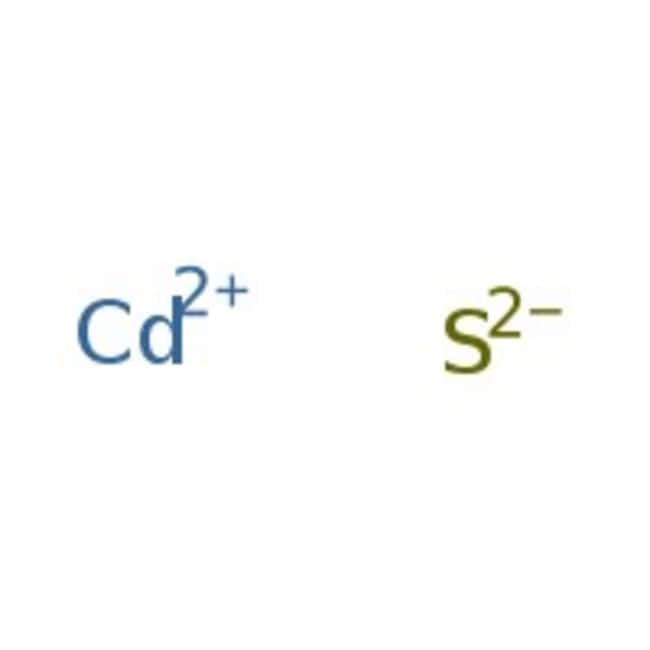Search Thermo Fisher Scientific
Cadmium sulfide, 98%, Thermo Scientific Chemicals



Cadmium sulfide, 98%, Thermo Scientific Chemicals
Chemical Identifiers
Specifications
Description
This Thermo Scientific Chemicals brand product was originally part of the Alfa Aesar product portfolio. Some documentation and label information may refer to the legacy brand. The original Alfa Aesar product / item code or SKU reference has not changed as a part of the brand transition to Thermo Scientific Chemicals.
Cadmium sulfide is used as a pigment in the chemical industry; for manufacturing of photoresistors, optical-electronic pairs, photodiodes, solar batteries and phosphors. Single crystals of cadmium sulfide are used for the preparation of optical devices operating in the infrared regaion of spectrum. Cadmium sulfide is a direct band gap semiconductor with a band gap band from 2.42 to 2.57 eV.
Solubility
Insoluble in water.
Notes
Stable under recommended storage conditions. Incompatible with oxidizing agents and acids.
Figures
Documents & Downloads
Certificates
Frequently asked questions (FAQs)
Citations & References
Safety and Handling
Classification of the substance or mixture
CLP classification - Regulation(EC) No 1272/2008
Label Elements
Signal Word
Danger
Hazard Statements
H302 - Harmful if swallowed
H341 - Suspected of causing genetic defects
H350 - May cause cancer
H361fd - Suspected of damaging fertility. Suspected of damaging the unborn child
H372 - Causes damage to organs through prolonged or repeated exposure
H413 - May cause long lasting harmful effects to aquatic life
Precautionary Statements
P260 - Do not breathe dust/fume/gas/mist/vapors/spray
P273 - Avoid release to the environment
P301 + P312 - IF SWALLOWED: Call a POISON CENTER or doctor/physician if you feel unwell
P201 - Obtain special instructions before use
P280 - Wear protective gloves/protective clothing/eye protection/face protection
P308 + P313 - IF exposed or concerned: Get medical advice/attention
Additional EU labelling
Restricted to professional users